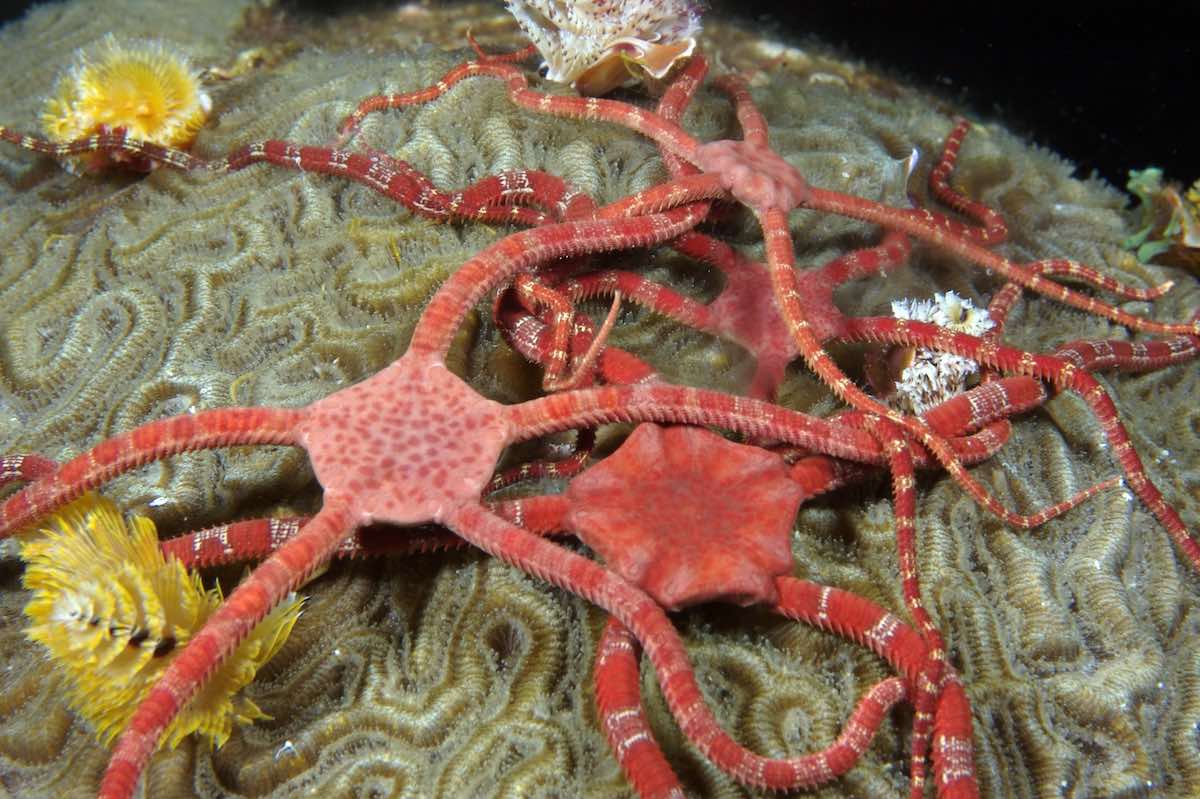The Difference Between Sea Stars and Brittle Stars
Radial symmetry, no hearts, can’t lose.

At first glance, sea stars and brittle stars might appear to be the same—they (usually) have five radiating arms and creep along on the ocean floor. But although sea stars and brittle stars are similar, they’re actually quite different! Follow along as we explain what makes these colorful invertebrates unique (and why you should love them both).
We will start with what they have in common. Both sea stars and brittle stars are in the phylum Echinodermata, which also includes sea cucumbers, sea urchins and more. Echinoderms are only found in the ocean and are known for their five-point radial symmetry and unique water vascular system. They typically have a tough, spiny surface, which inspired their name (in Greek, echinos means “spiny” and derma means “skin”). They also have the unusual ability to regrow lost body parts, and sea stars and brittle stars can regrow arms if broken off or eaten.
But within the phylum, sea stars and brittle stars are in different classes. Sea stars are in the class Asteroidea, where brittle stars are in Ophiuroidea, which also includes basket stars.

To tell the two apart, first look at their bodies. Their fundamental structure is different, especially when you look at where the arms connect to the center of the body. Sea stars have thicker, triangular-shaped arms that are typically their widest at the point of connection to the central of the body (think of the shape of the stars you used to draw on your notebook as a kid, although sea stars can have more than just five arms). Brittle stars, on the other hand, have much thinner arms that appear more “whip-like” than those of sea stars. The arms connect to a central disk, and it’s relatively easy to tell where the arm ends and the disk begins.
Next, look at how they move. Sea stars rely on their water vascular system to move. The water vascular system includes a number of small tube feet that become stiff when water is pushed into them, allowing the sea star to move on a conveyor belt-like rotation of feet. Although brittle stars also have a water vascular system, they twist and bend their long arms to move, instead. This means that they can move much more quickly than sea stars, especially when trying to escape a predator.

If you’re still not sure, look for the location of the madreporite, also known as the sieve plate. This round, specialized plate allows water to enter the water vascular system. In sea stars, it’s located on the “top” (or aboral, meaning opposite of the side of the mouth). In brittle stars, it’s located on the “bottom” (or oral side). But, let’s be honest—it’s way easier to tell them apart by looking at their arms (see above).
There you have it! The next time you’re at the aquarium, or on a dive, or poking through tide pools, you’ll be able to tell the difference between these enthralling echinoderms. Now, go out and impress your friends with your invertebrate facts!